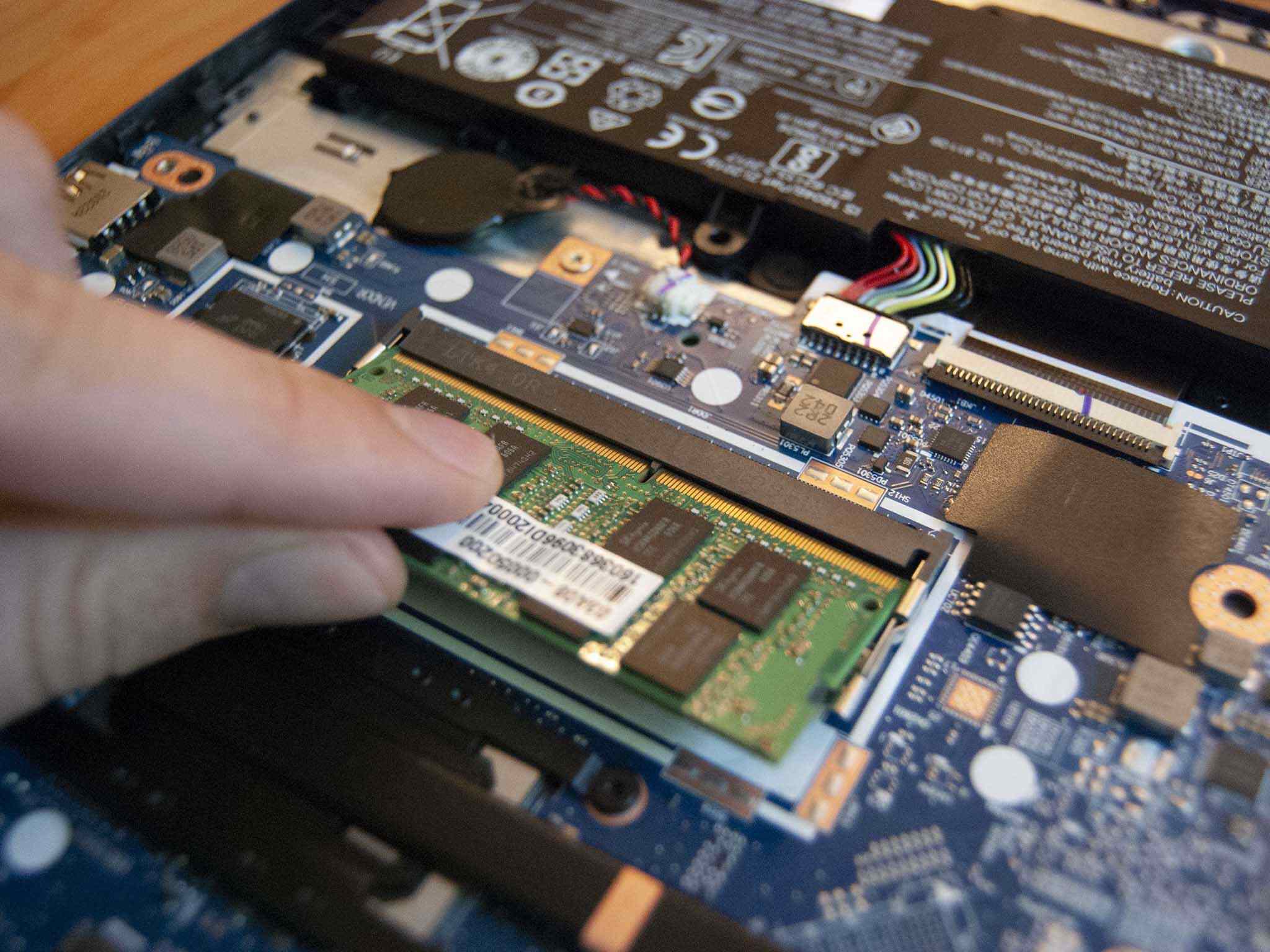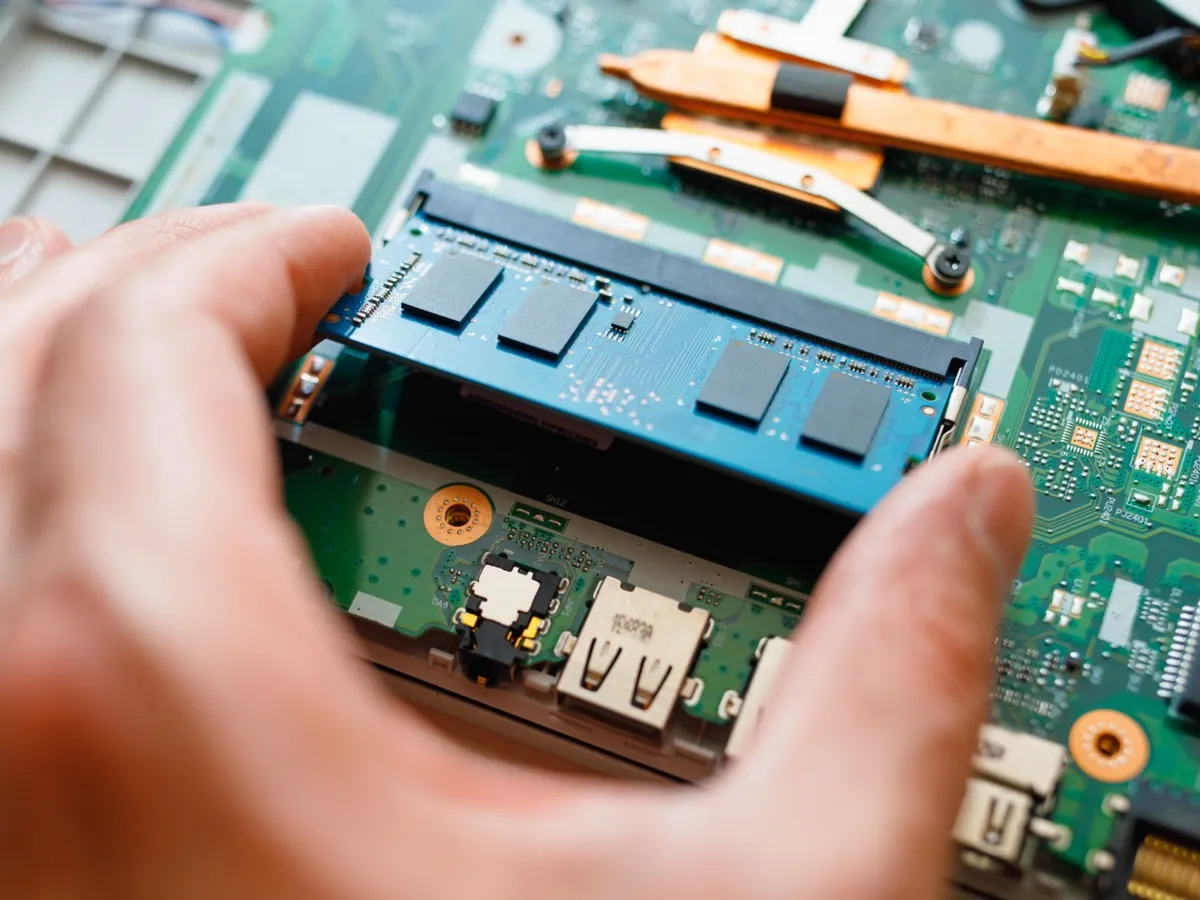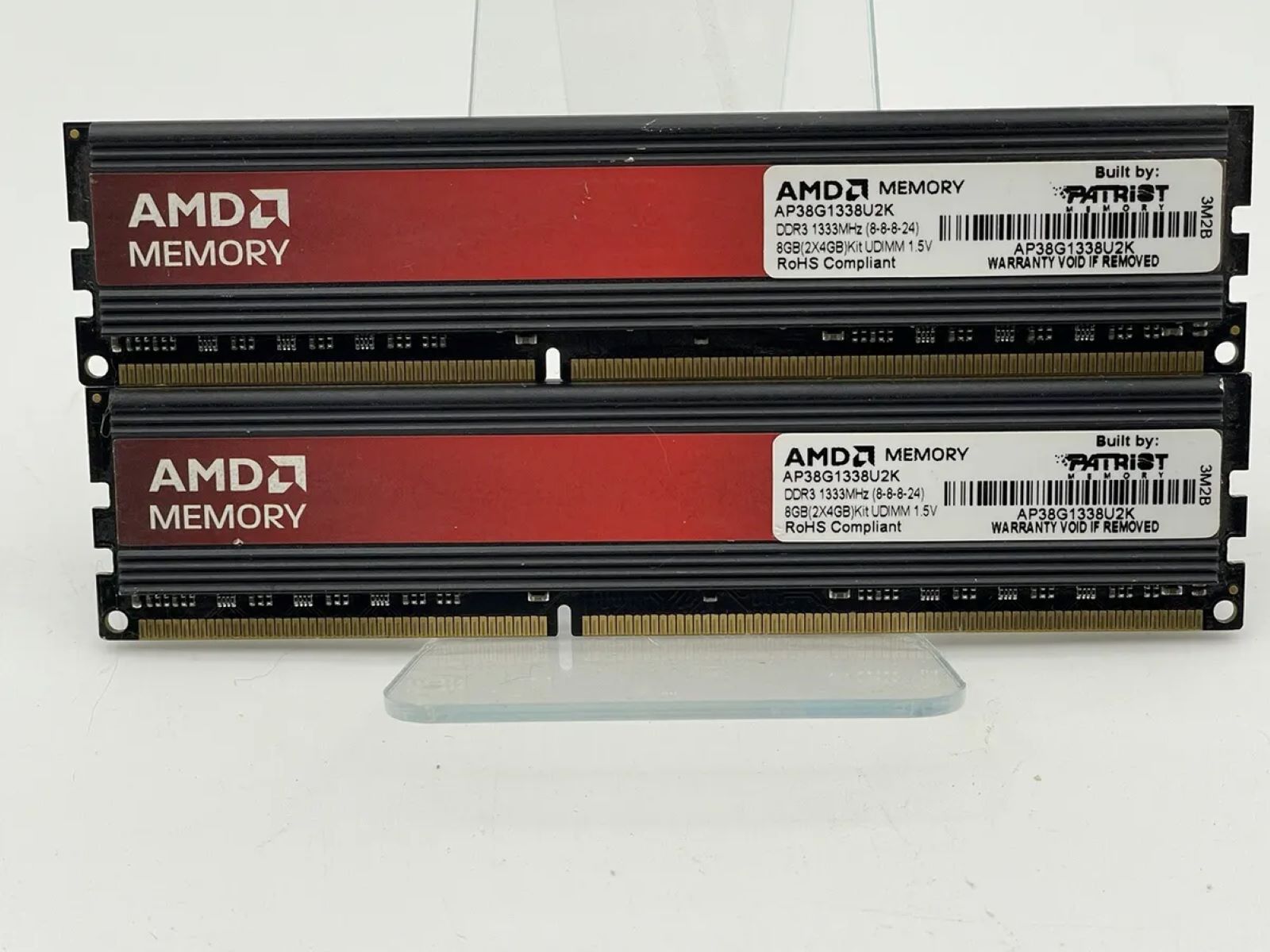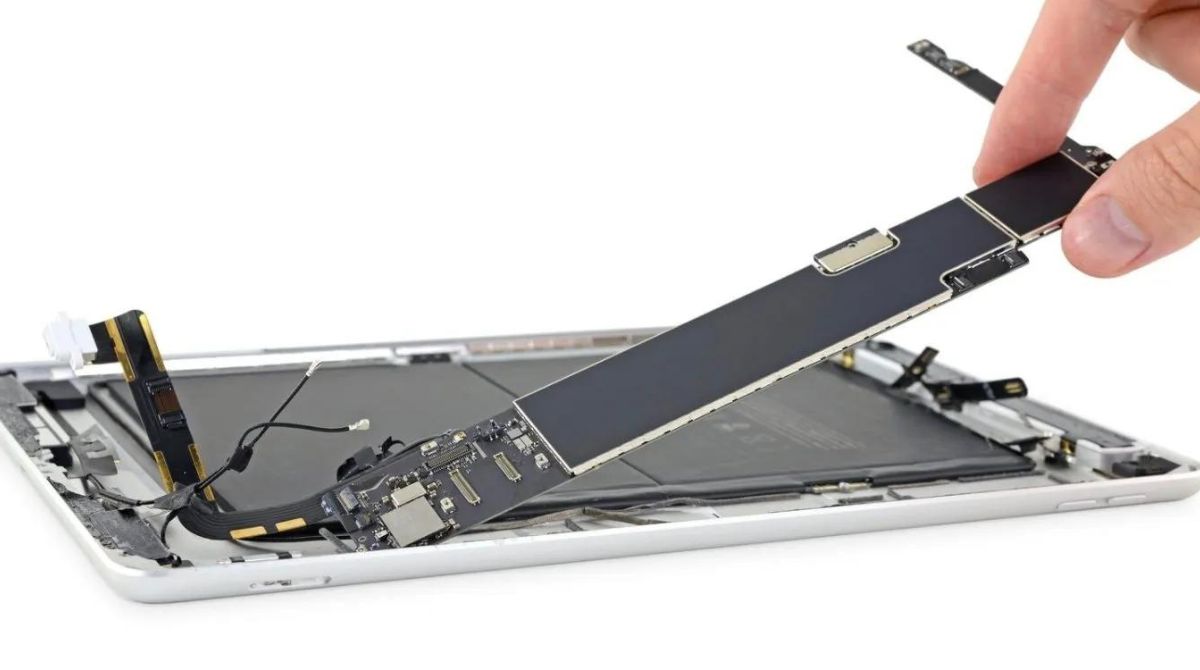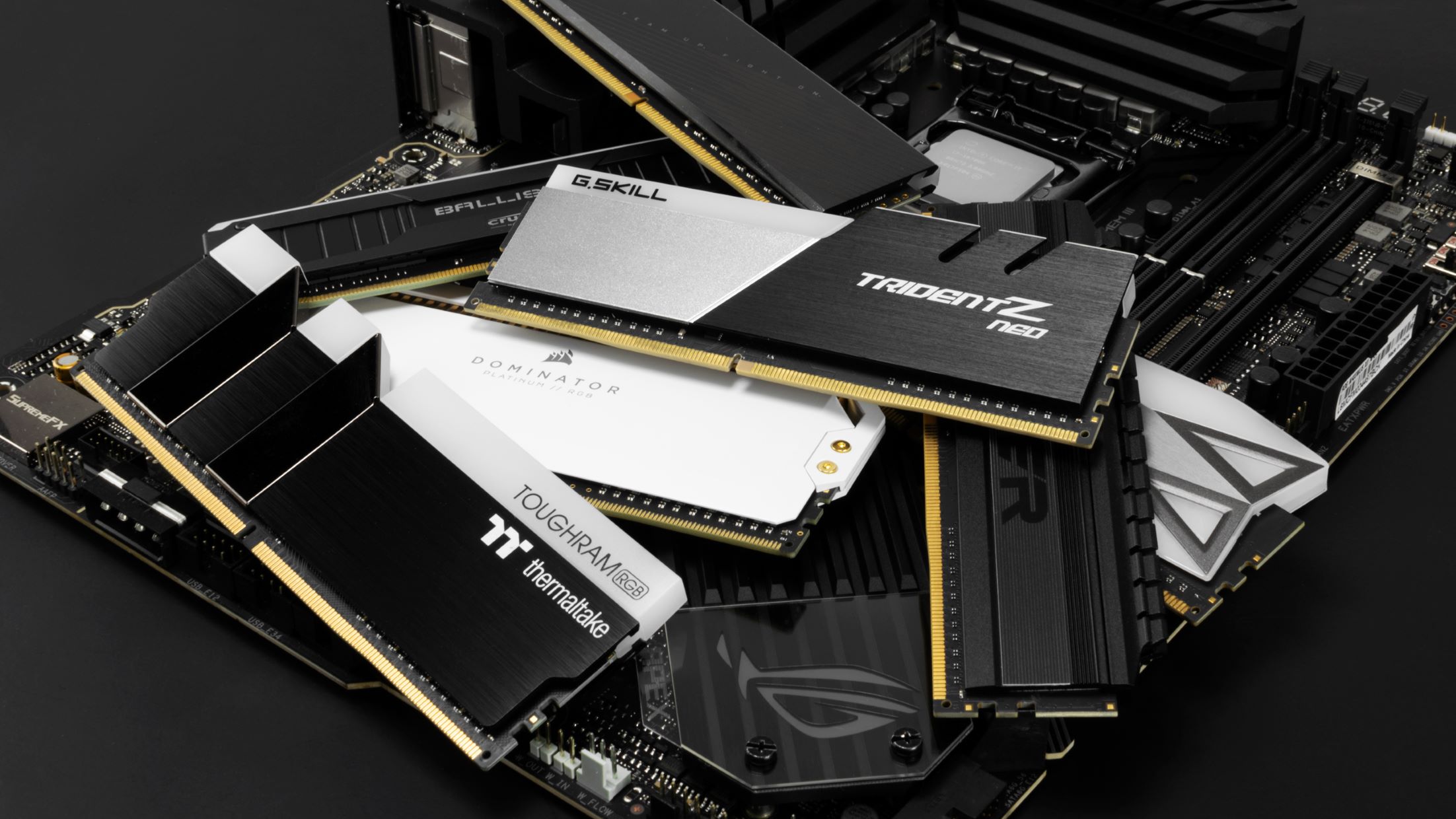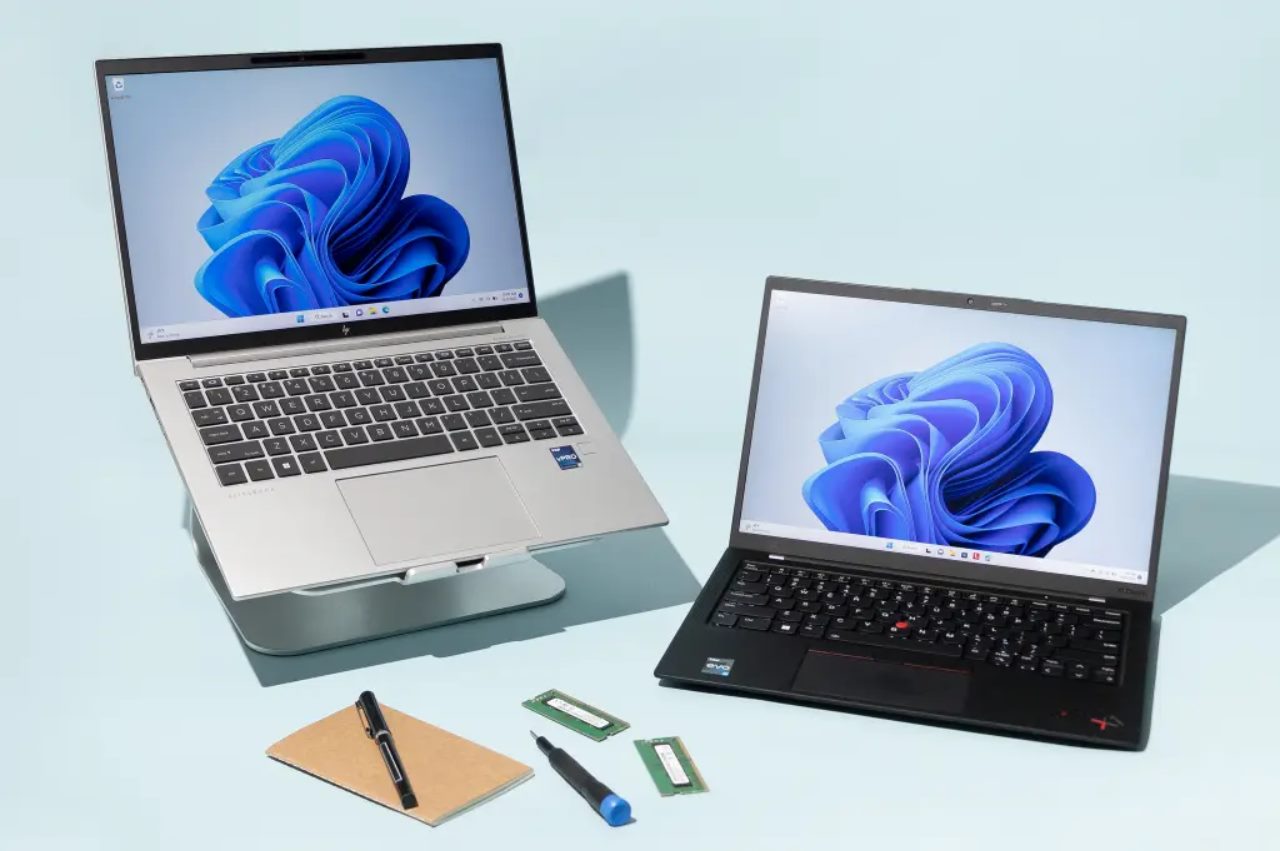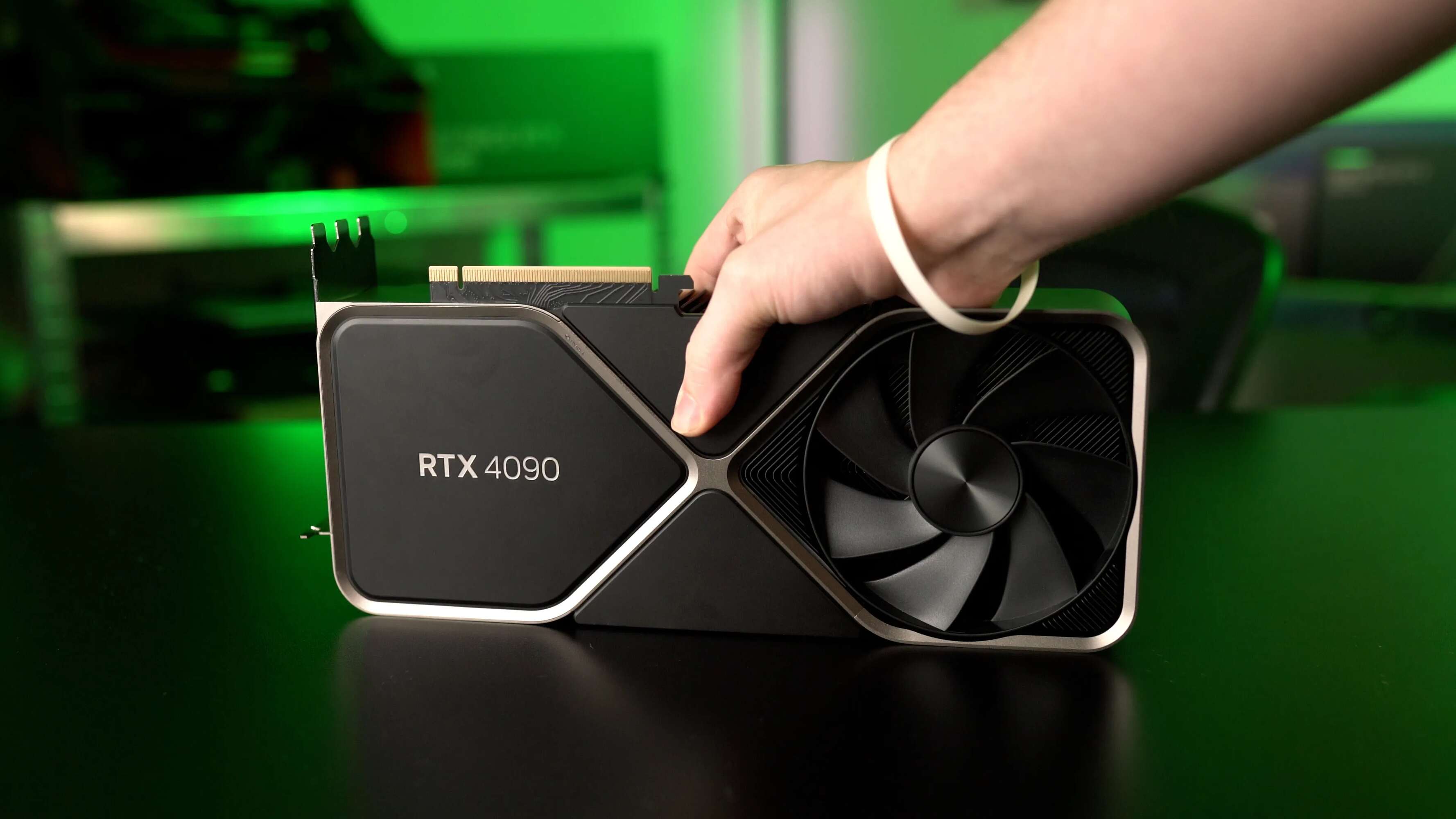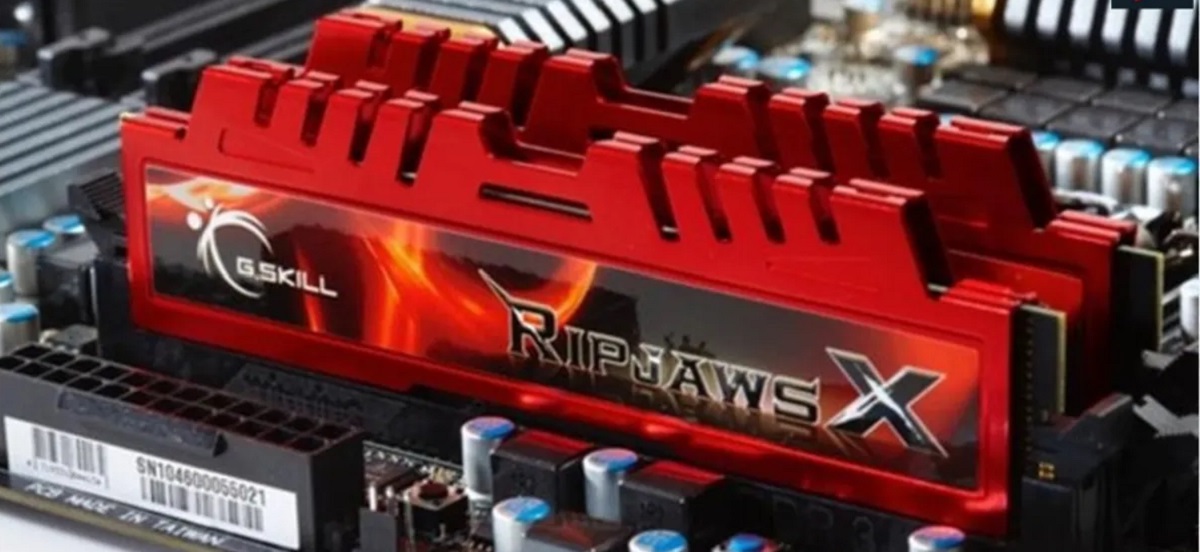Introduction
Welcome to the world of engineering, where the pursuit of knowledge and innovation meet the demands of complex design software and simulations. As an engineering student, you are embarking on a journey that will challenge your intellect and test your problem-solving skills. One of the crucial components that can greatly impact your productivity and overall experience as a student is the amount of RAM (Random Access Memory) in your computer.
RAM plays a vital role in the performance of your engineering software and applications. It functions as a temporary workspace for data that your computer needs to access quickly. The more RAM you have, the more information your computer can store and retrieve without constantly relying on slower storage devices like hard drives or solid-state drives.
Engineering software can be resource-intensive, requiring significant amounts of RAM to run smoothly. Programs like Computer-Aided Design (CAD) software, Finite Element Analysis (FEA) tools, and simulation software require a substantial amount of computational power and memory to perform complex calculations and simulations accurately.
Optimizing your computer’s RAM is particularly important for engineering students who need to run multiple programs simultaneously, such as CAD software while running simulations or performing calculations. Insufficient RAM can lead to frustratingly slow performance, sluggish responses, and even crashes, hindering your progress as a student.
In this article, we will explore the minimum requirements for engineering software, recommended RAM for different engineering disciplines, considerations for multitasking and running multiple programs, budget considerations for RAM upgrades, how to check your current RAM usage, and helpful tips for optimizing RAM usage.
So, whether you are studying mechanical engineering, civil engineering, electrical engineering, or any other discipline, understanding the importance of RAM and its impact on your computer’s performance will undoubtedly benefit you throughout your academic journey and beyond.
Why RAM is important for engineering students
RAM (Random Access Memory) is a critical component for engineering students due to the demanding nature of their software and applications. Here are several reasons why RAM plays a significant role in ensuring a smooth and efficient experience for engineering students:
1. Enhanced Performance: Engineering software, such as CAD and simulation tools, often require large amounts of RAM to handle complex calculations and data processing. Ample RAM allows these software programs to run seamlessly, providing engineers with faster and more efficient workflows.
2. Multitasking Abilities: Engineering students frequently find themselves running multiple programs simultaneously. This could involve working on a CAD design while running simulations or utilizing calculation software alongside project management tools. Sufficient RAM enables smooth multitasking, preventing the computer from slowing down or becoming unresponsive.
3. Handling Large Datasets: Engineers regularly work with large and intricate datasets that require significant memory to process. Insufficient RAM can result in slow data loading times and delays in performing calculations or analyses. Ample RAM ensures prompt data retrieval and efficient handling of complex datasets.
4. Efficient Rendering and Visualization: Many engineering disciplines, such as architecture and mechanical engineering, rely on 3D rendering and visualization. Rendering high-quality, detailed models requires substantial computational power and memory. Sufficient RAM facilitates smooth rendering, allowing for accurate and realistic visual representations.
5. Future-Proofing: As technology advances, engineering software and applications are becoming increasingly resource-intensive. By investing in ample RAM, engineering students can future-proof their computers, ensuring they can handle upcoming software updates and advancements without compromising performance.
6. Collaboration and Presentation: In engineering education, collaborative projects and presentations are common. With sufficient RAM, students can seamlessly collaborate on shared projects, allowing for real-time updates and smooth communication between team members. Additionally, presenting complex visualizations or simulations becomes more fluid and professional with enough RAM to support smooth transitions and real-time interaction.
7. Overall Productivity: Having adequate RAM significantly improves productivity for engineering students. With faster program launches, reduced lag, and smoother operations, students can complete their tasks efficiently, meet project deadlines, and focus more on the creative aspects of their work instead of waiting for programs to respond.
Understanding the importance of RAM for engineering students is crucial for maximizing efficiency and productivity. By investing in sufficient RAM, you ensure that your computer can meet the demands of your software, enabling you to focus on your studies and excel in your engineering endeavors.
Minimum requirements for engineering software
Engineering software often comes with specific minimum requirements to ensure optimal performance. These requirements can vary depending on the complexity and functionality of the software. Here are some general guidelines for the minimum requirements of engineering software:
1. Central Processing Unit (CPU): Most engineering software requires a modern and powerful CPU to handle complex calculations and data processing. A multi-core processor with a high clock speed is typically recommended to ensure smooth performance.
2. RAM (Random Access Memory): RAM is a critical component for engineering software. While the minimum RAM requirements can vary, a minimum of 8 GB is typically necessary for basic engineering tasks. However, for more demanding software and larger datasets, 16 GB or higher may be recommended.
3. Graphics Card: Some engineering software, particularly those that involve 3D modeling, rendering, and simulations, rely heavily on the graphics card (GPU) for smooth performance. A graphics card with dedicated memory and good processing power is recommended for optimal graphics performance.
4. Storage: Adequate storage is necessary to install and run engineering software. Solid-State Drives (SSDs) are highly recommended due to their faster read and write speeds, which can enhance software loading times and overall system responsiveness.
5. Operating System (OS): Engineering software is often designed to work on specific operating systems. Ensure that your computer meets the software’s OS requirements to ensure compatibility and seamless operation.
6. Display Resolution: Many engineering software applications benefit from higher-resolution displays, as they allow for better visibility and finer details. A monitor with a high-resolution display can greatly enhance the user experience and improve productivity.
7. Internet Connection: Some engineering software may require an internet connection for licensing and updates. Ensure that you have a reliable internet connection to take full advantage of the software’s features and stay up to date with the latest releases.
It’s important to note that these are general guidelines, and the specific requirements may vary depending on the software you are using. Always refer to the software’s official documentation or consult with technical support to ensure that your computer meets the minimum requirements.
Meeting the minimum requirements for engineering software ensures that your computer can handle the basic functionalities of the software. However, to fully utilize advanced features and experience optimal performance, it is recommended to have a computer with specifications exceeding the minimum requirements.
Recommended RAM for different engineering disciplines
When it comes to engineering disciplines, the recommended amount of RAM can vary based on the specific requirements of the software and the complexity of the tasks involved. While the minimum requirements mentioned earlier serve as a baseline, here are some general recommendations for the amount of RAM ideal for different engineering disciplines:
1. Mechanical Engineering: Mechanical engineering often involves working with complex CAD designs, simulations, and analysis software. To ensure smooth performance, it is recommended to have at least 16 GB of RAM. This allows for efficient handling of large assemblies, intricate simulations, and data analysis.
2. Civil Engineering: Civil engineering projects involve extensive 3D modeling, structural analysis, and simulation software. To handle these tasks effectively, a minimum of 16 GB of RAM is recommended. The higher the RAM, the smoother the navigation and interaction with large models or complicated simulations.
3. Electrical Engineering: Electrical engineering involves working with circuit design, simulation software, and programming IDEs. To handle these requirements efficiently, it is recommended to have a minimum of 16 GB of RAM. Additionally, if you plan to work with FPGA (Field-Programmable Gate Array) design or hardware development, consider having 32 GB or higher for better performance.
4. Chemical Engineering: Chemical engineering typically involves complex simulations, data modeling, and analysis software. To handle the computational demands, a minimum of 16 GB of RAM is recommended. Depending on the complexity and scale of your projects, you may consider higher RAM configurations for smoother and faster simulations.
5. Aerospace Engineering: Aerospace engineering requires extensive use of CAD software for designing and simulating aircraft components. To accommodate the large assemblies and complex simulations, a minimum of 16 GB of RAM is recommended. More RAM, such as 32 GB or higher, can further enhance performance when working with intricate aerospace designs.
6. Computer Engineering/Computer Science: Computer engineering and computer science students often work with software development, virtualization, and data analysis tools. A minimum of 16 GB of RAM is recommended for efficient multitasking, compiling large codebases, and running virtual machines.
7. Architectural Engineering: Architectural engineering involves working with sophisticated architectural design software and rendering engines. To handle the intricate 3D models and visualization demands, a minimum of 16 GB of RAM is recommended. Higher RAM configurations, such as 32 GB or more, can significantly improve rendering speeds and overall performance.
Remember that these recommended RAM specifications may vary based on the specific software you are using, the size and complexity of your projects, and your personal workflow preferences. It is always advisable to check the software requirements and consult with professionals or experienced users in your field for more tailored recommendations.
Considerations for multitasking and running multiple programs
Multitasking and running multiple programs simultaneously is a common need for engineering students. However, doing so puts an additional strain on your computer’s resources, particularly its RAM. Here are some important considerations for effective multitasking and running multiple programs smoothly:
1. Sufficient RAM: One of the primary considerations for multitasking is having enough RAM to accommodate the memory requirements of multiple programs running simultaneously. The more RAM you have, the better your computer can handle the workload without slowing down or becoming unresponsive. Having a minimum of 16 GB of RAM is recommended for seamless multitasking.
2. RAM Allocation Management: Some software allows you to manually allocate how much RAM it can utilize. Take advantage of this feature to ensure that critical programs receive adequate memory while allowing non-essential programs to use less RAM. This way, you can prioritize the software that requires maximum performance while minimizing resource allocation for less demanding tasks.
3. Close Unnecessary Programs: When multitasking, it is essential to close any unnecessary programs running in the background as they consume system resources. By freeing up memory, you can allocate more RAM to the critical programs you are actively working on, improving their performance and responsiveness.
4. Optimize Program Settings: Some programs have performance settings that let you adjust the level of resource usage. Explore these settings and tweak them according to your needs. For example, you can reduce the graphical quality in CAD software or limit software updates during your active work sessions to prevent unnecessary resource consumption.
5. Intelligent Program Use: Be mindful of the programs you have open and actively running at the same time. Certain software, especially resource-intensive engineering applications, can put a significant strain on your computer’s resources. Consider closing or pausing non-essential programs when working with memory-intensive software to prevent performance degradation.
6. Prioritize Hardware Resources: If you have the option, prioritize your current work by allocating hardware resources, such as CPU cores or GPU usage, to the programs that require the highest performance. This way, you can ensure that critical tasks receive the necessary processing power and memory, optimizing their overall performance.
7. Consider Virtualization: Virtualization software, such as virtual machines, can be resource-intensive. If you frequently use virtualization for tasks like software testing or running multiple operating systems simultaneously, ensure that you have sufficient RAM and processing power to support these virtual environments without affecting the performance of other programs.
By considering these factors, you can effectively multitask and run multiple programs without sacrificing performance. Adequate RAM, optimized settings, and smart resource management are key to smooth multitasking, improving your productivity and overall experience as an engineering student.
Budget considerations for RAM upgrades
Upgrading your computer’s RAM can significantly improve its performance and enhance your experience as an engineering student. However, before making a RAM upgrade, it’s essential to consider the budget implications. Here are some key budget considerations to keep in mind:
1. Assess Your Current RAM: Begin by checking the amount of RAM currently installed in your computer. This will help you determine how much additional RAM you need. If your computer already has sufficient RAM, an upgrade may not be necessary at this time.
2. Compare RAM Prices: RAM prices can vary depending on the type, speed, and capacity you choose. Research different RAM options and compare prices from various vendors to find the best deal. Be sure to consider reputable brands and read reviews to ensure you are purchasing reliable and compatible RAM modules.
3. Consider Future Expansion: Think about your future needs and potential growth in your engineering studies. If you anticipate working with more demanding software or larger datasets, investing in higher-capacity RAM modules now may save you money in the long run. It’s often more cost-effective to buy higher capacity RAM upfront than to upgrade again in the near future.
4. Compatibility with Existing Hardware: Before purchasing RAM, check the compatibility with your computer’s motherboard and existing RAM modules. Ensure that the new RAM modules match the speed, type, and capacity specifications supported by your motherboard. Consulting your computer’s documentation or reaching out to technical support can help you determine compatibility.
5. Consider Second-hand or Refurbished RAM: If your budget is limited, you may want to explore the option of purchasing second-hand or refurbished RAM modules. Many reputable vendors offer refurbished RAM with warranties, providing a more affordable alternative to brand-new modules. However, exercise caution and ensure that the refurbished RAM is compatible and reliable.
6. Utilize Student Discounts: As an engineering student, you may have access to student discounts from computer hardware vendors or university-affiliated stores. These discounts can help you save money on your RAM upgrade. Be sure to inquire about student pricing and take advantage of any available offers.
7. DIY Installation: RAM installation is relatively straightforward and can be done by most computer-savvy individuals. By installing the RAM yourself, you can save money on professional installation fees. Ensure you follow proper installation procedures and take necessary precautions to prevent damage to your computer or RAM modules.
Remember, while upgrading your RAM can be a worthwhile investment, it’s important to assess your budgetary constraints and prioritize your needs. Consider the potential benefits and weigh them against the cost of the upgrade to determine if it aligns with your budget and requirements as an engineering student.
How to check the current RAM usage on your computer
Checking the current RAM usage on your computer can help you determine if you need to upgrade your RAM or optimize its usage. Here are several methods to check the RAM usage on different operating systems:
1. Windows:
- Press the Ctrl, Shift, and Esc keys simultaneously to open the Task Manager.
- Click on the Performance tab.
- Under the Memory section, you can see the Currently allocated and In use values, which represent the current RAM usage.
2. Mac:
- Click on the Apple menu in the top-left corner of the screen and select About This Mac.
- In the Overview tab, click on the System Report button.
- In the Hardware section of the System Report, click on Memory. Here, you can see the Memory Used value, indicating the current RAM usage.
3. Linux (Ubuntu):
- Open the System Monitor by searching for it in the application launcher or by pressing Ctrl, Alt, and Del keys simultaneously.
- Click on the Resources tab.
- In the Memory section, you can see the Memory Used value, which represents the current RAM usage.
4. Chrome OS (Chromebooks):
- Click on the clock in the bottom-right corner of the screen.
- Click on the gear icon to access the Settings menu.
- Scroll down and click on About Chrome OS.
- Click on Detailed build information.
- Under the System section, you can see the Total memory value, indicating the installed RAM, and the Memory used value, representing the current RAM usage.
By checking the current RAM usage, you can assess how much memory your system is utilizing, and if it is reaching its limits. If you find that your RAM usage is consistently high, even when running lightweight tasks, it may be an indication that you need to upgrade your RAM to ensure smooth performance.
Keep in mind that these steps may vary depending on the version of the operating system you are using. Consult the documentation or search for specific instructions for your particular operating system version if needed.
Tips for optimizing RAM usage
Optimizing RAM usage can help improve your computer’s performance and ensure that it runs smoothly, especially when working with resource-intensive engineering software. Here are some tips for optimizing RAM usage:
1. Close Unused Programs: Close any unnecessary programs running in the background to free up memory. Only keep the programs you actively need for your engineering tasks running to minimize RAM usage.
2. Manage Startup Programs: Disable unnecessary programs from starting up automatically when you boot your computer. These programs consume memory and can slow down your system. Use the Task Manager (Windows) or Activity Monitor (Mac) to manage startup programs.
3. Use Lightweight Alternatives: If possible, consider using lightweight alternatives to resource-intensive software. For example, opt for a simpler CAD program or a lightweight text editor rather than a complete integrated development environment (IDE) for programming tasks.
4. Utilize Browser Extensions and Add-ons: Web browsers can consume a significant amount of RAM, especially when multiple tabs are open. Use browser extensions or add-ons that suspend inactive tabs to free up memory, allowing you to work more efficiently.
5. Optimize Virtual Memory/Page File: Adjust the virtual memory settings on your computer to optimize RAM usage. Increase the size of the page file (Windows) or swap space (Linux) to allow the operating system to use your hard drive as virtual memory when RAM becomes full.
6. Monitor Resource-Hungry Programs: Use task managers or system monitoring tools to identify programs that are using excessive resources. If any specific program consistently consumes a large amount of RAM, consider closing or updating it to reduce its impact on memory usage.
7. Update Software and Drivers: Regularly update your software and drivers to ensure they are optimized for performance and compatibility. Updated versions often include performance improvements that can help reduce RAM usage.
8. Avoid Running Simultaneous Resource-Intensive Processes: Avoid running multiple resource-intensive processes (such as complex simulations or rendering tasks) simultaneously, as this can lead to high RAM usage and slow down your computer. Prioritize tasks and complete them one at a time to optimize memory usage.
9. Keep Your Computer Clean: Regularly clean up your computer by removing unnecessary files, temporary files, and cache data. This can free up disk space, reducing the strain on your RAM and optimizing overall system performance.
10. Upgrade Your RAM: If you find that your RAM usage consistently reaches its limit and affects performance, consider upgrading your RAM. Adding more RAM can provide your system with additional memory and allow it to handle more demanding tasks effectively.
By implementing these tips, you can optimize your RAM usage and ensure that your computer operates at maximum efficiency, providing you with a smooth experience while working on your engineering tasks and projects.
Conclusion
RAM is a crucial component for engineering students, playing a significant role in the performance and productivity of their computers. It enables seamless operation of resource-intensive engineering software, allows for efficient multitasking, and enhances the overall user experience. By understanding the importance of RAM and considering the specific needs of their engineering disciplines, students can make informed decisions regarding RAM upgrades and optimization.
Minimizing RAM usage by following best practices such as closing unnecessary programs, managing startup applications, and utilizing lightweight alternatives can help optimize system performance. Additionally, monitoring resource-hungry programs, updating software and drivers, and keeping the computer clean can further enhance RAM usage efficiency.
Furthermore, considering budget constraints when planning RAM upgrades and exploring options such as refurbished RAM or student discounts can help make the process more affordable. It is also crucial to check the minimum requirements and recommended RAM specifications for engineering software to ensure compatibility and optimal performance.
Ultimately, engineering students must find a balance between their RAM requirements, budget considerations, and multitasking needs as they strive to enhance their productivity and excel in their fields. By optimizing RAM usage and staying cognizant of their computer’s capabilities, engineering students can maximize their efficiency and focus on their studies, unleashing their full potential in the world of engineering.







